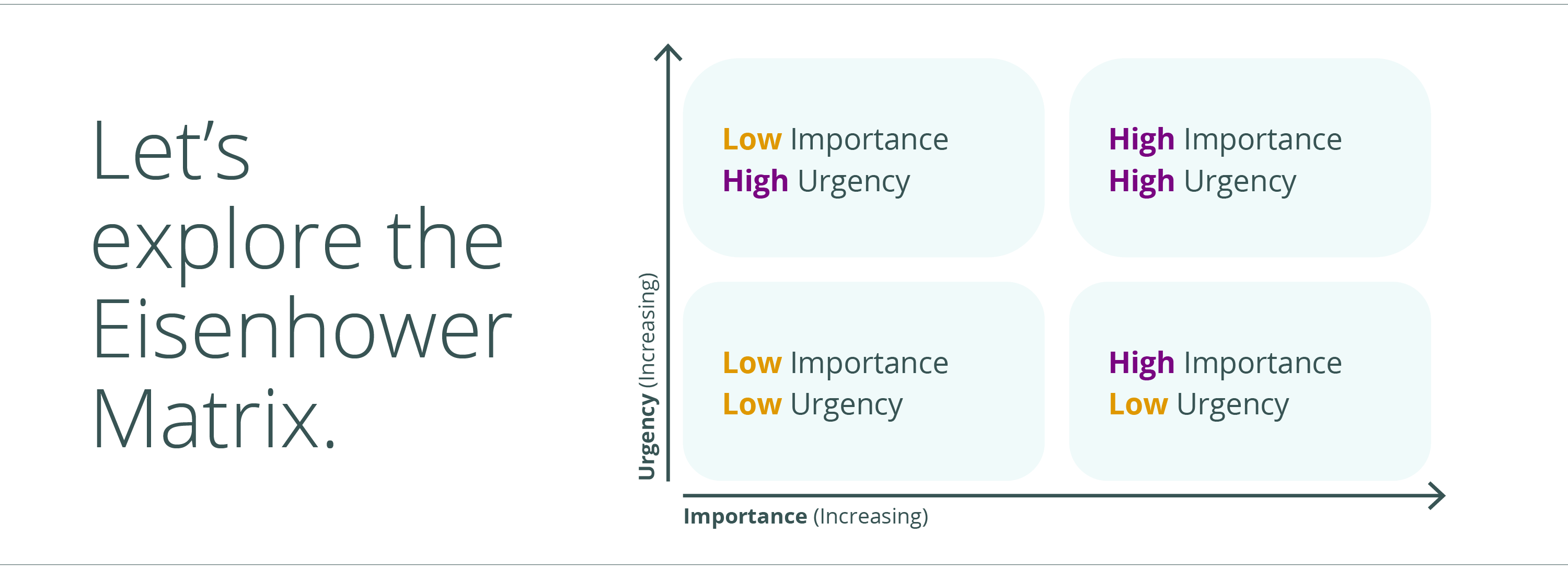The Power of Prioritization: Focus on What Truly Matters

5-minute read | Read post in browser.
Time is the most valuable resource we have, yet it often feels like there’s never enough of it.
The demands on your time – juggling deadlines, leading teams, navigating personal goals, or managing kids’ extracurricular activities – can pile up quickly. Without a system to guide your decisions, this constant pull in every direction can lead to overwhelm and chaos.
As a leader – someone who influences others – your ability to prioritize isn’t just a skill. It’s the difference between leading with clarity and getting lost in the noise.
Think of prioritization as your compass, guiding you toward what matters most. By focusing your time and energy with intention, you create momentum not only for yourself but also for those who look to you for direction.
Leadership isn’t about doing it all; it’s about choosing what’s most meaningful. The power of prioritization lies in its ability to turn chaos into clarity, ensuring that each step you take leads to greater impact and success.
Why Prioritization is Critical, Especially Now
At the start of a new calendar or fiscal year, it feels natural to reflect on what we want to achieve. This moment of planning is prioritization at its finest – choosing where to focus your energy to create the greatest impact.
It's not a one-time task.
- New challenges and opportunities will emerge throughout the year.
- Some goals may evolve or become less relevant.
Great leaders understand that prioritization is an ongoing process requiring regular reflection and adjustment.
It's not just about work.
Prioritization allows you to be the best version of yourself – for your team, your family, and yourself. It aligns your energy with what matters most, helping you lead with purpose in all areas of life.

Why is prioritization challenging?
Prioritization sounds straightforward, but it’s far from easy. Why?
- It requires saying “no” – to tasks, people, or habits that don’t align with your focus.
- Life happens: Plans change, crises emerge, and priorities shift.
You’re not stuck on a hamster wheel. You’re driving the car. While the view through the windshield may change, you’re always moving forward.
Prioritization isn’t static – it’s dynamic. It requires flexibility and the courage to pivot when necessary.
Common Barriers to Prioritization
- Perfectionism: The need to get everything “just right” before moving forward.
- Fear of failure: Worrying that the wrong choice could have lasting consequences.
- Urgency vs. Importance: Reacting to what feels pressing instead of focusing on what truly matters.
How to Overcome These Barriers
Start with self awareness.
- Recognize the mindset barriers holding you back.
- Examples: The drive for perfection or fear of letting go.
Choose a resource that fits your needs.
- 5 Steps to Break Through Mental Barriers: A free guide for those curious about exploring mindset and leadership growth.
- Mindset Matters Mini-Course: For leaders who know these challenges – dive right into practical tools to shift your mindset and unlock powerful growth.
Prioritization Made Practical
There are many tools available to help leaders prioritize effectively, including:
- ABC Method: Rank tasks as A (must do), B (should do), and C (nice to do).
- Pareto Principle: Focus on the 20% of tasks that deliver 80% of results.
- Time Blocking: Dedicate specific chunks of time to focus on key activities.
At Evolv3 Consulting, we often turn to one tool above all – the Eisenhower Matrix. Developed by President Dwight Eisenhower and popularized by Steven Covey in The 7 Habits of Highly Effective People.

This tool categorizes tasks into four quadrants:
- Urgent & Important: Do these immediately.
- Important but Not Urgent: Schedule and plan these.
- Urgent but Not Important: Delegate or minimize these.
- Neither Urgent nor Important: Eliminate these.
Eisenhower Matrix in Action
Imagine a leader who is well-known for "getting things done." Their reputation for execution has made them a go-to resource for their boss and team. While this reliability is an asset, it often leads to others adding to their workload without considering how these incremental demands impact the individual’s energy and focus.
By using the Eisenhower Matrix, this leader could evaluate everything on their plate and make strategic decisions about what to tackle, what to delegate, and what to decline.
This approach not only allows the leader to prioritize effectively but also prevents burnout by setting boundaries and modeling strategic decision-making for their team.
The matrix also sheds light on broader leadership dynamics.
A boss who continually leans on this leader might overlook their capacity limits, risking disengagement or burnout. Leaders who use the matrix can have informed conversations with their managers, advocating for support or adjustments when needed.
The Benefits of Intentional Focus
Prioritization isn’t just about getting more done – it’s about getting the right things done. When you focus your energy on tasks that matter most, the impact is amplified, creating a ripple effect across your personal productivity, team dynamics, and overall well-being.
Here’s how intentional focus transforms your leadership:
- Clarity and Confidence: Eliminate the second-guessing that slows progress.
- Momentum in Action: Tackle one meaningful priority to set the tone for the day.
- Trust and Influence: Aligning your actions with your goals inspires others to follow.
Start small. Each morning, identify one priority that aligns with your goals and let it guide your energy.

A Challenge for the Week
What’s one priority you can focus on this week to make a meaningful difference in your work or life?
Try using the Eisenhower Matrix to sort your to-dos and see what shifts in your approach. How does it feel to prioritize with intention?
Let’s keep talking.
What excites or challenges you about prioritizing? What’s your favorite prioritization tool? Share your thoughts in the comments.
Was this post helpful? Share your feedback.
ADDITIONAL SUPPORT
Need help reflecting?
Your Birkman Map could be helpful in providing insight into how you likely approach tasks around planning. While no statements are absolute, here’s something to consider:
- Doers (Red): Thrive on immediate action but may struggle with pausing to prioritize.
- Communicators (Green): Value relationships, making it tough to say no or de-prioritize.
- Analyzers (Yellow): Naturally detail-oriented but may overanalyze, delaying decisions.
- Thinkers (Blue): Big-picture strategists who sometimes find the small tasks hard to tackle.






Responses